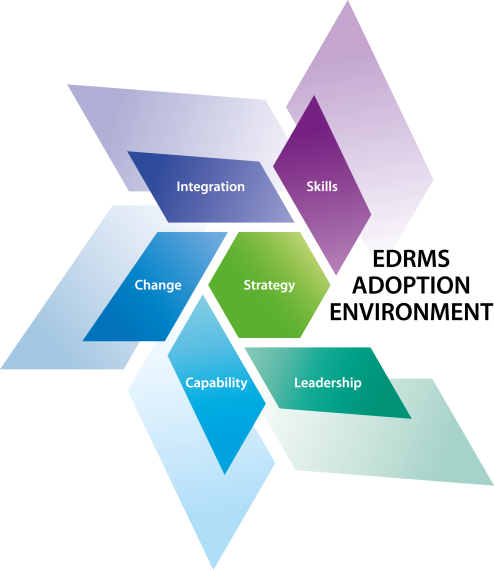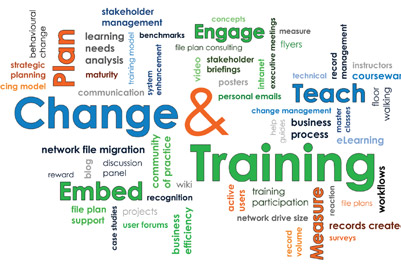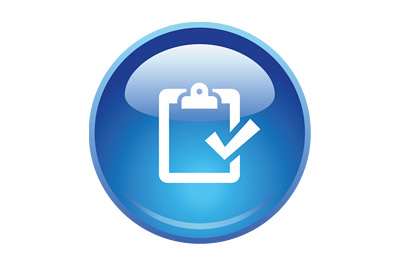
A personal trainer offers three advantages: assuming you want to get fit.
They offer motivation, helping people move past self-imposed limitations, stimulate a feeling of accomplishment in themselves, and help them achieve goals they never thought possible. Personal trainers make it easier to get results. Studies have clearly shown that people who work with a Personal Trainer will achieve up to 80% better results three times faster than on their own. They also ensure that people exercise safely to prevent injury.
From my observation, Records and Information Managers must at times feel like they are on a treadmill sweating it out to get their voice heard in organisations, lifting heavy weights to influence decisions makers in the business and boxing several rounds to get their project (in the shape actually needed to embed good recordkeeping behaviours), accepted by senior management.
Slightly tongue in cheek then, here are seven “Personal Trainer” tips especially for records managers, to influence their organisation to take recordkeeping practices and the use of an electronic document and records management system seriously.
1. Buddy up.
When getting fit, it’s always preferable to have someone work with you – someone who will help motivate you to remain on track and complete your exercise sessions.
It is also advisable to find your buddies in the quest for better information and records management. This is not the same as nominating superusers. Superusers are not necessarily the people who are passionate about the benefits that good information management practices bring to an organisation. Your information management buddies may be in senior or junior positions; the key element is that they can see the benefits. Form a group, give your group a name, make it visible and set out to attract like-minded friends. Create on-line and off-line forums that help people understand the benefits the functionality an EDRMS can bring to business processes. Take care not to have a recordkeeping bent to the group. Make it a business process improvement group. Not only will you find your influence spreading, but soon you will not be alone in thinking about the benefits of good information management practices. Good ideas will be coming left of field to you and requests for budget will be sparked from the business rather than information and records management.
2. Use shorter workouts of greater intensity.
Shorter workouts of greater intensity can be as effective as longer ones when getting fit. Sure, everyone would like to be able to work out for 45 minutes uninterrupted, but with today’s busy schedules and demanding jobs, finding time to exercise can be a struggle. The good news is that you don’t need a huge block of time to see results. Studies have shown that workouts as short as 10 – 15 minutes can strengthen the body and improve your health.
Similarly, when it comes to getting records and information management on the radar of senior management, small projects to achieve specific aims may have the same impact as a big roll-out. The biggest benefit is that you are always doing something to improve records and information management. For example, run a project to improve recruitment cycle times and security of personnel data of applicants. Recruitment is a process that is often considered ‘too slow’ by the business and has several approval processes from the declaration that a vacancy exists, to salary and job levels, to the actual interview and background check. Getting recruitment wrong or late can have a significant deleterious effect. Recruitment also touches every department and manager level at some time. The opportunity to introduce managers to information management practices and EDRMS functionality with a project that will take away concerns about the process should be an enticing one.
3. Add variety to see results.
Undoubtedly, the fastest way to see changes in your body is to keep surprising it. Changing your routine every few days prevents your body from becoming conditioned to the same exercise day after day and requires it to call on different muscles for different activities.
Add variety to the routine you serve up to senior managers too. Try exposing, in detail, where current information management risks lie if they are not responding to the call for compliance. It is not sufficient here to just run a mantra of risk reduction. Map out a significant process or processes highlighting the probability and consequence of risk events occurring at each step. Re-map the process or processes using EDRMS functionality to eliminate the probability and or reduce the consequence. If risk does not work either, try productivity. Again, map the process and determine where elapsed days or actual man-hours can be reduced by utilising EDRMS functionality and good information management practices.
Talking to senior managers about how good information management practices and utilisation of the functionality of an EDRMS can improve the business from quite different contexts will kindle more interest in the topic as a business improvement tool, which is sure to get more traction than only talking about compliance and retention schedules.
4. Know your excuses and head them off.
When trying to get fit, it can be difficult to discipline yourself to your exercise schedule unless you give yourself an advantage. Good advice would be to sit and write down all the excuses you would use to avoid exercising or eating better. Once you’ve done that, go back and counter all your excuses. If you wrote down lack of time as an excuse, oppose it with suggestions for short, frequent workouts rather than one long session. If you wrote down sugar cravings in the evenings, be prepared for those by having a pre-determined meal plan. If you can anticipate your own excuses and know how to respond to them, you’ve won half the battle.
In the records and information world, exactly the same is true. We have had clients who tell us they do not use the EDRMS because it’s impossible to find anything when they save a document into their EDRMS. A bit of demonstration in titling and searching effectively by keywords rather than by classification usually opens up a whole vista of opportunities for them.
Make up a list of excuses that people use to excuse themselves from using an EDRMS. Most of the excuses are built on ignorance of the functionality of the EDRMS. Write out the potential solutions to the excuses and publish it as a set of mythbusters. Go further and run workshops with recalcitrant users and managers and just work on getting the ‘why’ of their non-use of the EDRMS out on the table. Solve the easy ones such as “I can’t be sure drafts are deleted in the EDRMS” on the spot and take away a clarified set of more complex excuses to find the solutions. Return to a short meeting or meetings if only one or two people had a particular excuse, with the solutions.
5. Make it fun!
Perhaps the most common complaint about exercise is that it becomes boring too quickly. Help yourself break out of the boredom by choosing activities that appeal to you. Instead of spending 30 minutes inside on the treadmill, go for a hike on a local nature path. Rather than doing your aerobics video for the millionth time, go outside with your kids and jump on the trampoline for a while. The goal is to choose an activity that you enjoy and that requires physical activity.
In records and information management, use experiential earning to make assimilating good practices fun. Don’t deliver dry training that is full of PowerPoint slides and system screen shots. When training on the Business Classification Scheme (BCS) for instance, prove to attendees that they use business classification schemes every day and that you are not introducing a new concept to them, merely extending it to the way they store and search for records. You can do this by, for example, handing out recipe books and asking them what classification scheme is being used in the book. One book might use ingredients as a means of classification, another may use country of origin yet another by famous chef. They switch between these means of classification with ease, we are asking them to do the same from usually and organisational or project classification to a functional classification. Ask them to create a functional classification of recipes. Then introduce your BCS when they ‘get’ the concept.
6. Schedule and commit.
To increase your chances of having a consistent workout plan, you need to create a sense of obligation to your personal at-home exercise program. Schedule your workouts just like any other appointment and write it on your calendar. Knowing that you have set aside time for exercise can help you follow through and stick to a successful program.
Create a plan for your records and information management progress from where you are now to where you want to be. Schedule your execution of tactics. Be aware that you do have activities which must be run in sequence for your best chance of success. For example, you will need to get your mythbusters developed before seeking to influence human resources on running a project to improve the efficiency and effectiveness and security aspects of recruitment.
You may need to get a few cross-department processes under your belt before taking on a wider audience or the senior management audience to get approval for a broader and deeper project.
7. Reward yourself (and your team and your ‘friends’)
In a fitness program, it is important to set checkpoints throughout your exercise program to assess your progress. Whether your goal is to lose weight, build muscle, or simply improve your health, take the time to check up on your improvement and then reward yourself for all the hard work!
Transitioning and organisation from an ad-hoc approach to records and information management largely built around ignorance of what good information management practices and broader use of EDRMS functionality can bring is a hard slog. Records and information management is not sexy to the vast majority of managers and users.
If you have set out a plan (see 6. Schedule and commit) with milestones, celebrate progress with the teams involved, the friends (see 1. Buddy up) of your project and senior management. Convey the progress in the language of the business, not the language of records and information management.
…and when the celebration dies down, give yourself time to appreciate what you have done and use the feelings that flow from that as motivation for the next step in getting an organisation fit for records and information management.







